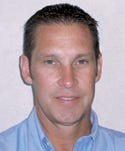OUTSTANDING QUALITY AND REGULATORY TEAMS
June 1, 2007
|
Entrusting your manufacturing and quality operations to a contractor requires a lot of faith. Although you might be able to do some monitoring of your own, you need to know that your outsourcing partner is paying proper attention to quality procedures and ensuring regulatory compliance. Plexus Electronic Assembly (Neenah, WI), a contract medical electronics manufacturer, has a system in place that is designed to ease device firms' concerns and justify their faith. The system ensures consistency and thoroughness.
“We have a beginning-to-end process that is all part of the quality system regulation [QSR],” says Bruce Schullo, site quality manager at Plexus's Buffalo Grove, IL, plant near Chicago. “It's incorporated from design to design transfer, manufacturing, getting the product to a user, and field surveillance. Most contract manufacturers don't do that.”
How does this process work? Part of it utilizes a software program. “We developed an in-house software program that executes the requirements of the QSR and other customer requirements,” he says.
|
Andy Hyatt. |
Another way Plexus does things differently is its focus on project teams. If a start-up device company is the smallest of a contract manufacturer's 25 clients, it could rightly be concerned that its products are afterthoughts to the contractor. To ensure that doesn't happen, and that all quality and regulatory requirements are met for all customers, a team is given responsibility for the products of no more than five or six customers. That Plexus team is charged with manufacturing, quality engineering, and ensuring that the right materials are being used—and because of the small, tight-knit structure, no project is an afterthought. “So you know you'll rank in the top five, regardless of your size,” says Schullo. “Every team is a dynamic, well-trained group of people.”
One tool the teams use is an open issues list, which identifies each activity required, who is responsible for executing it, and what sort of data are needed. “We use it like a checklist to make sure we're not missing anything,” Schullo says. “All the standard operating procedures, device master files, and other such documentation is linked into the system, available for use. We do a lot of assembly, so this also has the steps for manufacturing the product.”
|
Steve Davis. |
Despite the multitude of teams, however, Plexus's system is designed to be consistent—down to seemingly minor things like what invoices look like—across all of its manufacturing sites. Instead of having 25 different procedures for 25 different clients, Plexus has one procedure that is flexible enough to incorporate all clients' requirements. By reducing variability, the firm reduces potential for quality- or regulatory-compliance errors. “Our plant near Chicago provides the same service and documentation as our plant in Penang, Malaysia,” says Schullo. (Plexus has a third medical manufacturing plant in Juarez, Mexico.)
Along with streamlining and consistency, Plexus has an engineering group that helps customers on the product design and development side. It works with a manufacturing transition team to enable the results from those efforts to move seamlessly into the firm's manufacturing operations.
|
Mike Buseman. |
“There is typically a dedicated transition manager who works as the liaison between the customer and the manufacturing site to ensure the process is completed per expectations,” says Scott Weber, manager of global regulatory compliance. “And, within our medical product quality management system procedures, we have a finished device transfer process to allow for a consistent methodology to meet regulatory requirements.”
Underpinning the process is an eight-person regulatory compliance group that ensures everything done is in accordance with international regulatory requirements. Some contract manufacturers have their customers take charge of regulatory compliance, but Plexus has an infrastructure in place for customers that want that function to be outsourced as well. Having these resources contributes to a culture where regulatory compliance is highly valued and prioritized for all customers, regardless of size.
|
Steve Diloreto. |
“Some companies come to us because they perceive that [working with us is] the best opportunity to not get into trouble with FDA,” says Schullo. “Regulatory compliance is what we do.”
The Plexus Team
Mike Buseman, senior vice president, operations
Steve Davis, director, operations, IL
Steve Diloreto, vice president, manufacturing technology and quality
Andy Hyatt, market sector vice president
Bruce Schullo, site quality manager, IL
Scott Weber, manager, global regulatory compliance
More Teams
Copyright ©2007 Medical Device & Diagnostic Industry
About the Author(s)
You May Also Like







